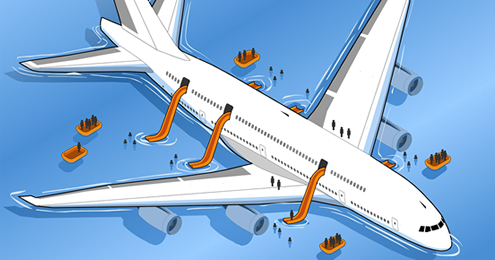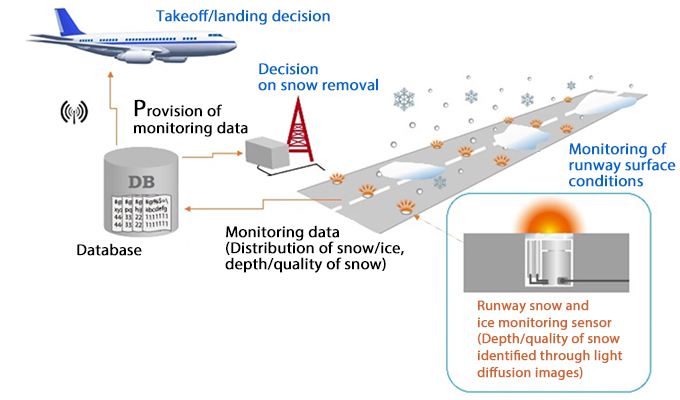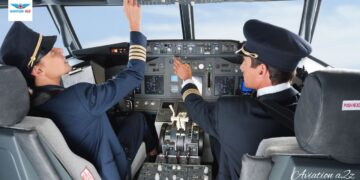Aviation accidents still frighten until in this day and age, nonetheless safety has been the best priority for the aviation trade over the past one hundred years. Technology, coaching and risk management have along resulted in commendable enhancements.
Aviation – Safest form of travel

Despite the recent tragic loss activity, flying is commonly same to be the safest style of transport, and this is often a minimum of true in terms of fatalities per distance cosmopolitan. in step with the Civil Aviation Authority, the morbidity per billion kilometres cosmopolitan by plane is zero.003 compared to 0.27 by rail and a pair of.57 by car.
Statistically, you have got a lot of likelihood of being killed riding a bicycle or perhaps by lightning. the probabilities of dying in associate air crash within the America or Europe ar calculable to be twenty nine million to 1.
“When I started within the business virtually thirty years agone, my boss had one basic message: you have got to expect a median of twenty jet plane losses round the world once a year,” remembers Josef Schweighart, Head of Aviation Federal Republic of Germany, AGCS.
“Thankfully, such statistics ar currently history,” he says.“There has been a staggering reduction within the numbers of each fatal accidents and fatalities within the intervening decades, the results of technology, enhancements in traffic management and pilot coaching,” he adds.
+ve Stats for safe travel

Fatal accidents have fallen each decade since the Nineteen Fifties, a major accomplishment given the huge growth in aviation since then. In 1959, there have been forty fatal accidents per a meg craft departures within the North American country. among ten years this had improved to but 2 in each million departures, falling to around zero.1 per million nowadays.The enhancements in safety square measure even a lot of spectacular once the rise in traffic is taken into account. In 2014, the world’s airlines carried a record three.3 billion passengers in 2014. there have been 641 fatalities and twelve fatal accidents last year, in line with the International transport Association (IATA).
While the death rate considerably redoubled year-on-year (there were 210 fatalities in 2013), IATA says business aviation safety continues to be at “the lowest rate in history” supported hull losses per a meg flights.By these figures, the 2014 world jet accident rate was zero.23, the equivalent of 1 accident for each four.4 million flights.
This was truly AN improvement over 2013 once the world hull loss rate stood at zero.41 (an average of 1 accident each a pair of.4m flights). each beat the five-year rate (2009-2013) of zero.58 hull loss accidents per million flights. return fifty years – once airlines carried solely one41 million passengers – there have been eighty seven crashes killing 1,597 people.
Excellence of Engineering
The improvement in airline safety is right down to a mixture of many factors, though the introduction of the reaction engine within the Nineteen Fifties stands out as a significant development. Jet engines give grade of safety and responsibleness unmatched by the sooner piston engines. Today, it’s aforesaid that engine makers have nearly eliminated the possibility of breakdown.The introduction of physical science, most notable the introduction of digital instruments – called the ‘glass cockpit’ within the Nineteen Seventies – and therefore the advent of fly-by-wire technology within the Nineteen Eighties are notable achievements, driving safety enhancements. enhancements in sensors, navigation instrumentation and traffic management technology, like anti-collision management systems, have conjointly contend a job.
In twenty years’ time we have a tendency to tend to would possibly even see plenty of elementary changes in aviation technology, driven by the economic and environmental concerns of fossil fuels
Human factors

While technology has helped drive enhancements inside the aviation industry’s safety record, nice strides in safety management systems and insights into human factors have in addition contributed significantly.“Aviation accidents ar a series of events that just about unceasingly involve a part of human error,” Downey says.“However, the protection culture inside the aviation business has changed significantly throughout my career. Flight employment has become a plenty of controlled and complete setting with the event of perennial employment. the utilization and technological improvement of flight simulators has been one in every of the foremost necessary changes I even have witnessed.”Recurrent employment, inside that pilots and crews refresh their skills and indurate emergency things, was initially introduced inside the airline sector and is presently making a positive impact altogether sectors of aviation, explains Downey.“Safety management systems have radically changed the scan of the human admit the airline sector and ar presently making a bearing inside the final aviation world,” he says.Another very important safety development in recent decades has been inside the area of crew or cockpit resource management and additionally the looking at of data, that ar aimed toward reducing the prospect of human error. for example, cockpit data looking at systems – furthermore as digital audio and visual recording equipment – ar presently wide accustomed confirm safety trends which is able to be addressed by employment, equally on investigate causes of accidents.
Learning methodology
Improved safety is in addition a reflection of the aviation industry’s excellent risk management and increasing ability to identify problems before they become an enormous issue. Air accident investigations and craft safety inspections ar presently additional sensible, whereas enhancements in manufacturing technology and better control ar making craft safer.“Aviation companies have unceasingly targeted on safety – but the tools on the market to run airline risk management departments and confirm problems before they become essential, have improved greatly,” says Schweighart.
New technology – new risks

The aviation industry’s spectacular safety record in recent decades is in large 0.5 a reflection of technological developments introduced then honed among the half the 20th century. resulting generations of jet craft have sometimes proven safer than the last.
The piston-driven craft that dominated the world’s airline fleet in 1960 had degree accident rate of twenty seven.2 accidents per million departures. The second generation of craft among the latter 0.5 the 19 Sixties and early Seventies, as well as the Boeing 727 and additionally the DC-9 jet airliners, had degree accident rate of 2.8 accidents per million. this generation of craft have degree accident rate of 1.5 accidents per one thousand thousand departures.
Next generation
Aircraft vogue may eventually have to be compelled to modification loads of dramatically, notably if flying is to be unbroken cheap as fuel costs climb among the longer term. this may induce new varieties of propulsion – like electrical, hybrid or star powered planes – radical new framework designs, furthermore as new techniques, like power-assisted take-offs or unpowered landings.“In twenty years’ time we have a tendency to tend to could even see loads of basic changes in aviation technology, driven by the economic and environmental problems with fossil fuels.,” says Josef Schweighart, Head of Aviation European country, AGCS.
New materials and computer-aided aviation
“The new generation of airliners unit very innovative, but it’s going to take time – a minimum of the many years – to see but resistant the materials ar,” says Thomas Cahlik, Head of Mediterranean, Aviation, AGCS.

“Once, pilots relied on their ‘steam gauges’ and had very little live data at their fingertips. presently the data out there ar usually overwhelming,” he says.
Stay Updated with us. Have a wonderful day!


































